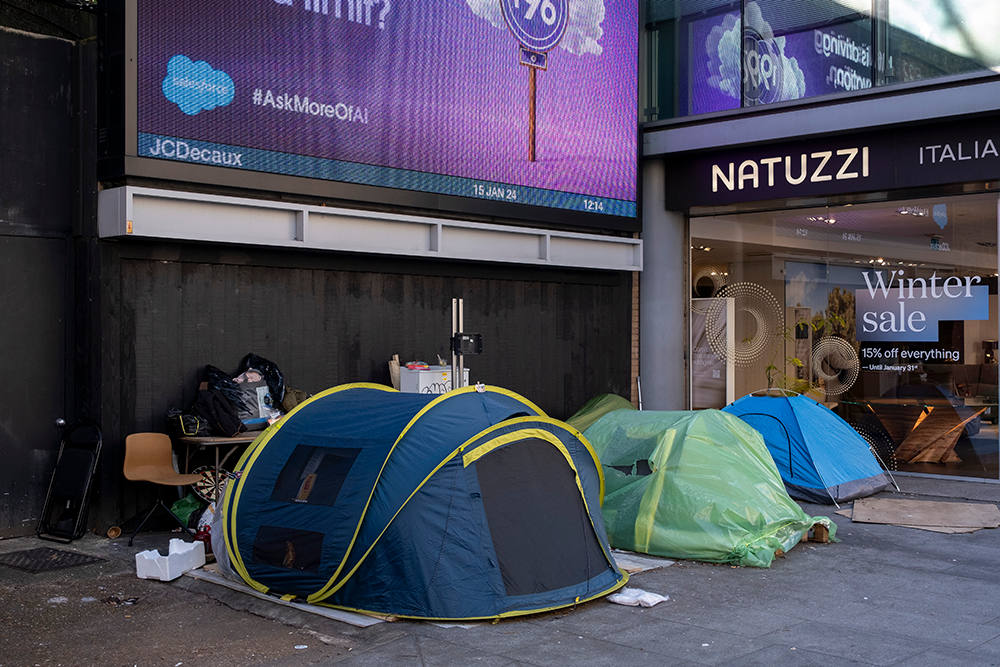Donald Trump’s meeting with President Xi was the standout moment of this month’s Asia-Pacific leaders’ summit in South Korea. Yet almost as much attention focused on the rumours that Trump’s gaze had turned once again to North Korea. Addressing suggestions he would meet Kim, the American President told reporters, ‘I’d be open 100 per cent. I get along very well with Kim Jong Un.’ A meeting never materialised, but speculation – and tension – has only grown since.
Days after Trump’s departure, US Defence Secretary Pete Hegseth arrived as part of his own tour of Asia. In Seoul, he became the first defence secretary in nearly eight years to visit Panmunjeom, the border village within the Joint Security Area (JSA) of the Demilitarised Zone (DMZ). There, North and South Korean soldiers stand face to face, separated by a single line that cuts through a small blue hut – the same building where the 1953 armistice was signed and where Korean leaders last met in 2018, ahead of Trump’s first summit with Kim.
The visit’s symbolism was unmistakable. Panmunjeom had been closed for years after a rogue US serviceman fled across the border and only recently reopened to limited tourist groups in the weeks before Trump’s arrival. Hegseth’s trip was the first by a defence secretary since James Mattis in 2017 – a prelude, then, to Trump’s historic summits with Kim in Singapore and Hanoi. The timing has inevitably prompted speculation: could a third meeting be on the horizon?
For centuries, Korea viewed itself as a ‘shrimp among whales’
South Korea, too, has grown more receptive to another Trump-Kim summit – driven by two factors: a shift in domestic politics and a pragmatic reading of Trump’s ‘America First’ foreign policy.
South Korean politics has steadied after the turmoil of December 2024, when President Yoon Suk Yeol was impeached following his attempt to declare martial law. Yoon has claimed ‘pro-North Korean’ forces were threatening democracy – a move that plunged the country into months of interim leadership. After fresh elections, President Lee Jae Myung took office in June and quickly set a new tone. Conservative governments such as those of Yoon’s People Power party (PPP) typically take a hard line on the North, boosting defence spending and rejecting inter-state cooperation. Progressive administrations, like that of Lee’s Democratic party of Korea (DPK), pursue dialogue and restraint instead. Although plans to reopen the JSA predated Lee’s victory, he made the same pledge during his failed 2022 presidential campaign.
Lee’s presidency coincides with Trump’s second term – and with it, a US foreign policy team hawkish only really towards China. Officials such as Elbridge Colby, the under secretary of defense for policy, have urged allies from Europe to East Asia to shoulder more of their own defence burdens. South Korea is no exception. During his visit, Hegseth praised Lee’s commitment to boost defence spending – a pledge credited with securing US support for nuclear-powered submarines by 2030. With 25,000 American troops stationed in South Korea, Washington’s strategic priority is clear: focus those forces on the Taiwan threat, not the Korean peninsula.
Events moved quickly after Trump’s departure. Days later, artillery fire landed in the waters west of South Korea; soon after Hegseth’s visit, North Korea launched a short-range ballistic missile into the Sea of Japan. This drew international condemnation – though Russia defended Pyongyang’s ‘legitimate right’ to act. Such displays are routine from the North, yet the South under Lee has taken quieter steps in the opposite direction: ordering propaganda loudspeakers that were in place across the border to be silenced, urging activists to halt leaflet drops, and reinstating a ministry for inter-Korean dialogue. The North, in turn, removed its own speakers.
These gestures may seem minor, but they allow Seoul to showcase goodwill while letting Pyongyang remind Washington of its potential menace. For centuries, Korea viewed itself as a ‘shrimp among whales’ – a posture that shifted only with its mid-20th century alliance with the United States. That legacy shapes today’s mixed reception for Trump: protests greeted his visit, but so did crowds waving US and South Korean flags, chanting, ‘we stand together’.
Throughout 2025, nations have marked the 80th anniversary of the end of the second world war. In South Korea, those commemorations carry added meaning: the liberation from more than three decades of Japanese occupation. Yet another milestone – the 75th anniversary of the Korean War’s outbreak – passes with quieter reflection. Trump has renewed his attention on a peninsula where memories are long, but whether he meets Kim or not, Seoul seems satisfied that, for now, he still stands with them.







Comments